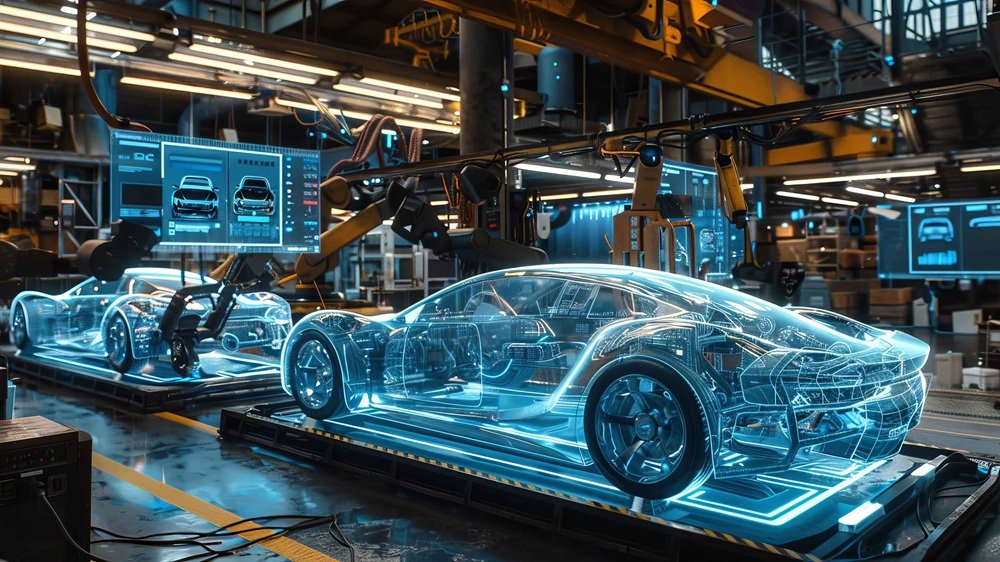The Power and Prestige of European Automobile Companies: Legacy, Innovation, and the Road Ahead
Introduction
The European automobile industry has long stood as a beacon of engineering excellence, innovation, and automotive artistry. From the cobblestone streets of old German towns to the high-speed motorways of Italy and France, Europe has not only built cars but defined what the automobile represents a fusion of technology, luxury, performance, and cultural identity.
European automobile companies are known for more than just making vehicles; they are global trendsetters. Brands like Mercedes-Benz, BMW, Audi, Volkswagen, Porsche, Ferrari, Volvo, and Renault have left an indelible mark on the global automotive landscape. These companies combine tradition with innovation, continually adapting to the evolving demands of the world, from cutting-edge electric vehicle (EV) technology to high-performance supercars.
In this article, we’ll explore the journey of European automobile companies, their global impact, technological advancements, challenges, and the road that lies ahead.
- The Origins: Pioneers of the Automobile
Europe is the birthplace of the modern automobile. In the late 19th century, Karl Benz developed what is considered the first true automobile in Germany a three-wheeled vehicle powered by an internal combustion engine. Shortly after, other inventors and manufacturers across the continent followed suit, giving rise to companies that would become legends.
- Mercedes-Benz, founded in Germany, is widely recognized for producing the first gasoline-powered car.
- Peugeot in France was one of the earliest to shift from bicycle manufacturing to automobiles.
- FIAT in Italy became a symbol of Italian automotive design and mass production.
These early companies laid the foundation for an industry that would evolve from luxury products for the elite to global necessities across all classes and cultures.
- The Rise of Industrial Titans
As the 20th century progressed, European automobile companies became industrial powerhouses. Germany, France, Italy, the UK, and Sweden led the way in both manufacturing volume and technological advancement.
Germany developed a reputation for engineering precision. Brands like BMW, Audi, Volkswagen, and Porsche became known for their performance, durability, and luxury. German cars combined functionality with high-end appeal, creating a strong foothold in global markets.
Italy took a different path, leaning into style and performance. Ferrari, Lamborghini, and Maserati became synonymous with speed, design, and exclusivity. These companies didn’t just make cars they made cultural icons.
France produced versatile brands like Renault, Peugeot, and Citroën, focusing on innovation and affordability. French automakers were early adopters of electric and hybrid concepts and often introduced revolutionary designs.
The United Kingdom offered a mix of rugged utility and royal luxury. Brands like Land Rover, Jaguar, and Rolls-Royce created vehicles that combined British elegance with engineering strength.
Sweden’s contribution came in the form of Volvo and Saab, known for their emphasis on safety, minimalism, and environmental consciousness.
Each country and brand brought its own flavor to the automotive scene, shaping not only European transportation but global car culture.
- Innovation and Technology: Europe at the Forefront
European carmakers have consistently been at the cutting edge of automotive technology. From safety systems to luxury features and engineering breakthroughs, they have pushed the envelope at every stage.
Safety
Swedish brand Volvo led the global charge for safety. They introduced the modern three-point seatbelt and consistently scored top marks in crash tests. European companies have also pioneered systems such as lane-keeping assistance, blind-spot detection, and adaptive cruise control.
Performance
Germany’s Porsche and BMW M-series, along with Italy’s Ferrari and Lamborghini, set benchmarks in high-performance engineering. These brands developed race-bred technology that trickled down into consumer vehicles, such as turbocharging, launch control, and aerodynamic enhancements.
Luxury
Europe defined modern automotive luxury. Brands like Mercedes-Benz S-Class introduced innovations that became industry standards from air suspension to infotainment systems, ambient lighting, and massage seats.
Electrification
European brands were early movers in hybrid and electric technology. Companies like BMW (i-series), Audi (e-tron), and Renault (ZOE) brought EVs into the mainstream before some other regions caught up. With growing concerns over climate change, European companies are investing billions into electrifying their fleets.
- The Electric Revolution: Europe Leading the Charge
The shift toward sustainable mobility is one of the biggest transformations in the auto industry. European governments have set aggressive targets for phasing out internal combustion engines, pushing automakers toward zero-emission vehicles.
Investment in Electric Vehicles (EVs)
European carmakers are heavily investing in EV platforms. The Volkswagen Group launched its ID series, planning to make much of EVs of its lineup by 2030. Mercedes-Benz aims to go fully electric wherever market conditions allow. BMW’s “Neue Klasse” platform marks a new era of electrified mobility.
Infrastructure and Innovation
Europe is rapidly expanding its EV infrastructure, with thousands of charging stations across highways, cities, and rural areas. Public-private partnerships are helping standardize fast-changing technologies and integrate renewable energy sources.
Regulations Driving Change
Stringent EU emission standards have forced automakers to innovate or face heavy fines. This regulatory pressure has fast-tracked the transition to hybrids, plug-in hybrids, and fully electric vehicles.
While the transition poses logistical challenges, Europe has embraced the change not just as a necessity, but as an opportunity to redefine leadership in a new era of mobility.
- Challenges Facing European Automakers
Despite their global prestige, European automobile companies face significant hurdles.
Global Competition
Asian automakers, especially from China, Korea, and Japan, are producing high-quality vehicles at lower costs. Chinese electric car makers are aggressively entering European markets with affordable, tech-laden EVs.
Supply Chain Disruptions
Global events, such as pandemics, geopolitical tensions, and raw material shortages, have disrupted supply chains, delayed production and raising costs. European automakers, which rely on complex networks across countries, have had to rethink logistics.
Labour and Economic Pressures
Shifting from combustion engines to electric vehicles requires fewer parts and different expertise, potentially displacing thousands of workers. Balancing innovation with job security is an ongoing challenge in manufacturing-centric economies like Germany.
Environmental Accountability
While transitioning to EVs is a step forward, automakers are also under scrutiny for battery sourcing, carbon footprints in production, and vehicle recycling. The industry must ensure that green claims are backed by sustainable practices.
- Luxury and Performance Niche
European brands continue to dominate the luxury and performance segments. The enduring appeal of Ferrari, Bentley, Rolls-Royce, and Bugatti shows that there’s still demand for craftsmanship, exclusivity, and legacy.
These cars are not merely transportation; they’re rolling works of art. They represent the pinnacle of what engineering and design can achieve. Even as EVs rise, luxury brands are adapting with electric supercars, personalized interiors, and connected services that blend tradition with modern expectations.
Performance divisions like AMG (Mercedes), M (BMW), and RS (Audi) are also transitioning, offering plug-in hybrids and fully electric performance models that aim to retain their driving dynamics while meeting emission targets.
- Europe’s Influence on Global Design and Culture
European automobile design has shaped global aesthetics. From the classic elegance of a Jaguar E-Type to the minimalist curves of a Volvo or the bold edges of a Lamborghini, European design language is instantly recognizable.
Design schools across the continent have trained generations of automotive stylists, many of whom now lead design teams globally. European design emphasizes proportion, harmony, and emotion often missing in function-first manufacturing models.
Furthermore, Europe’s car culture with events like the Geneva Motor Show, the Nürburgring races, and Italy’s Mille Miglia continues to inspire enthusiasts worldwide.
- Collaborations, Mergers, and the Global Marketplace
To remain competitive, European companies have embraced partnerships and alliances.
- The Stellantis Group formed from the merger of PSA (Peugeot-Citroën) and FCA (Fiat-Chrysler), combining resources and markets.
- Renault–Nissan–Mitsubishi Alliance pools R&D efforts to build shared platforms.
- Volkswagen Group owns multiple iconic brands including Audi, Porsche, and Lamborghini optimizing economies of scale.
These collaborations allow companies to innovate faster, reduce costs, and adapt to diverse consumer demands across continents.
- The Road Ahead: What’s Next for European Automakers?
The future of European automobile companies will be defined by how they manage the transition to sustainable, digital, and autonomous mobility.
Electrification Goals
Most major European manufacturers have announced targets to phase out internal combustion engines between 2030 and 2040. Meeting these goals requires not just EVs, but investment in green supply chains, battery recycling, and renewable energy integration.
Autonomous Driving
European firms are investing heavily in autonomous technology. Brands like Audi, Mercedes-Benz, and BMW have introduced Level 2 and Level 3 autonomous features, with full autonomy on the horizon. These developments could revolutionize urban mobility and long-distance travel.
Connected Services
Cars are becoming more like smartphones on wheels with over-the-air updates, AI-driven assistance, and personalized user experiences. European brands are at the forefront of blending hardware with digital ecosystems.
Sustainability and Ethical Manufacturing
Expect stronger commitments to ethical sourcing, CO₂ neutrality, and circular production. Brands are exploring bio-based materials, low-impact manufacturing processes, and new ownership models like subscriptions and car-sharing.
Conclusion
European automobile companies have shaped the global automotive industry from its earliest days. With a rich legacy of craftsmanship, innovation, and cultural influence, they continue to lead not by resting on tradition, but by embracing transformation.
From internal combustion to electric power, from manual driving to autonomous systems, Europe’s automakers are not just surviving the waves of change they’re riding them. Challenges lie ahead, but so does opportunity.
As we move into a new era of sustainable, connected, and intelligent mobility, European automobile companies remain not just relevant, but essential not only as builders of vehicles, but as architects of the future.






